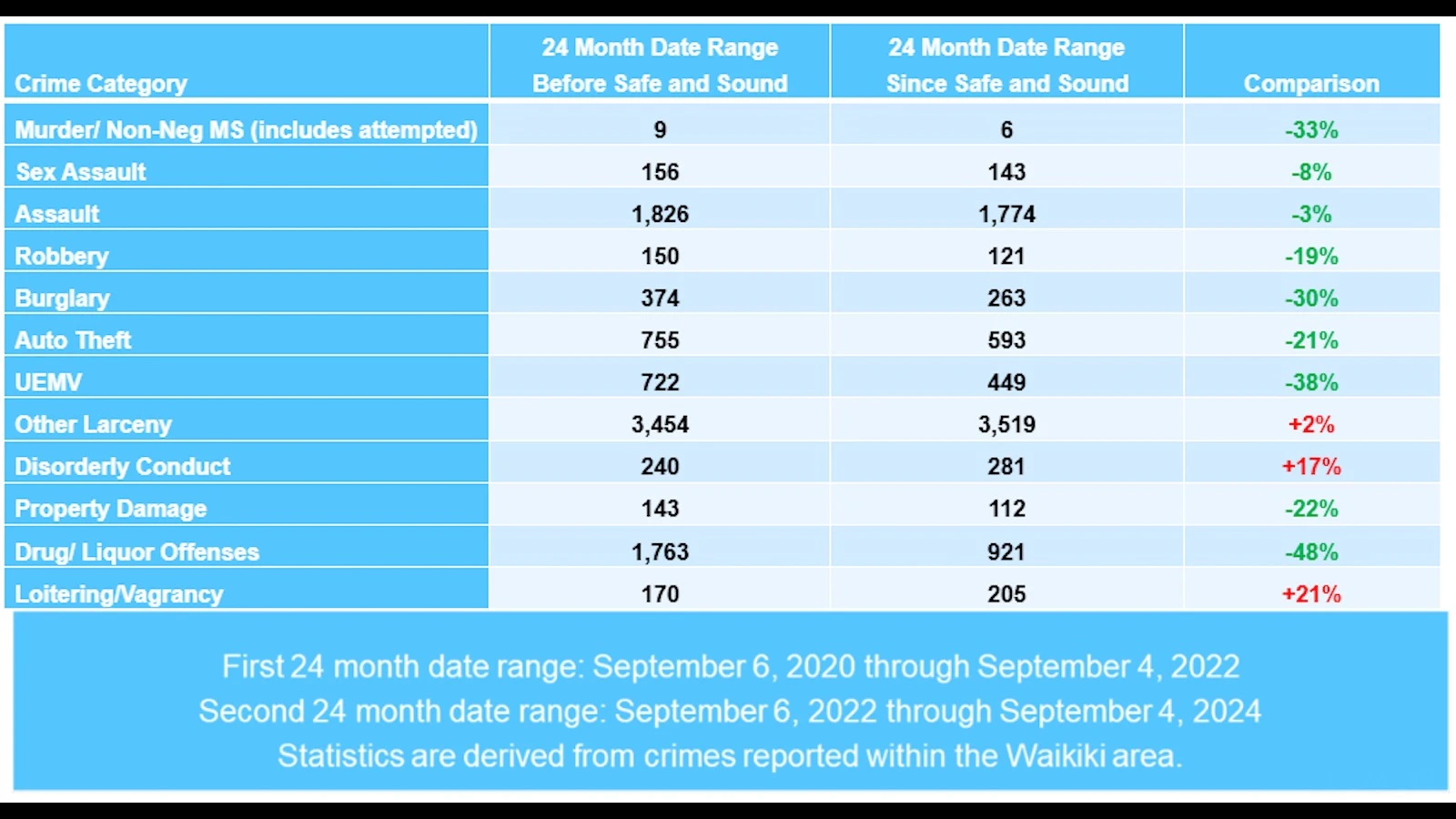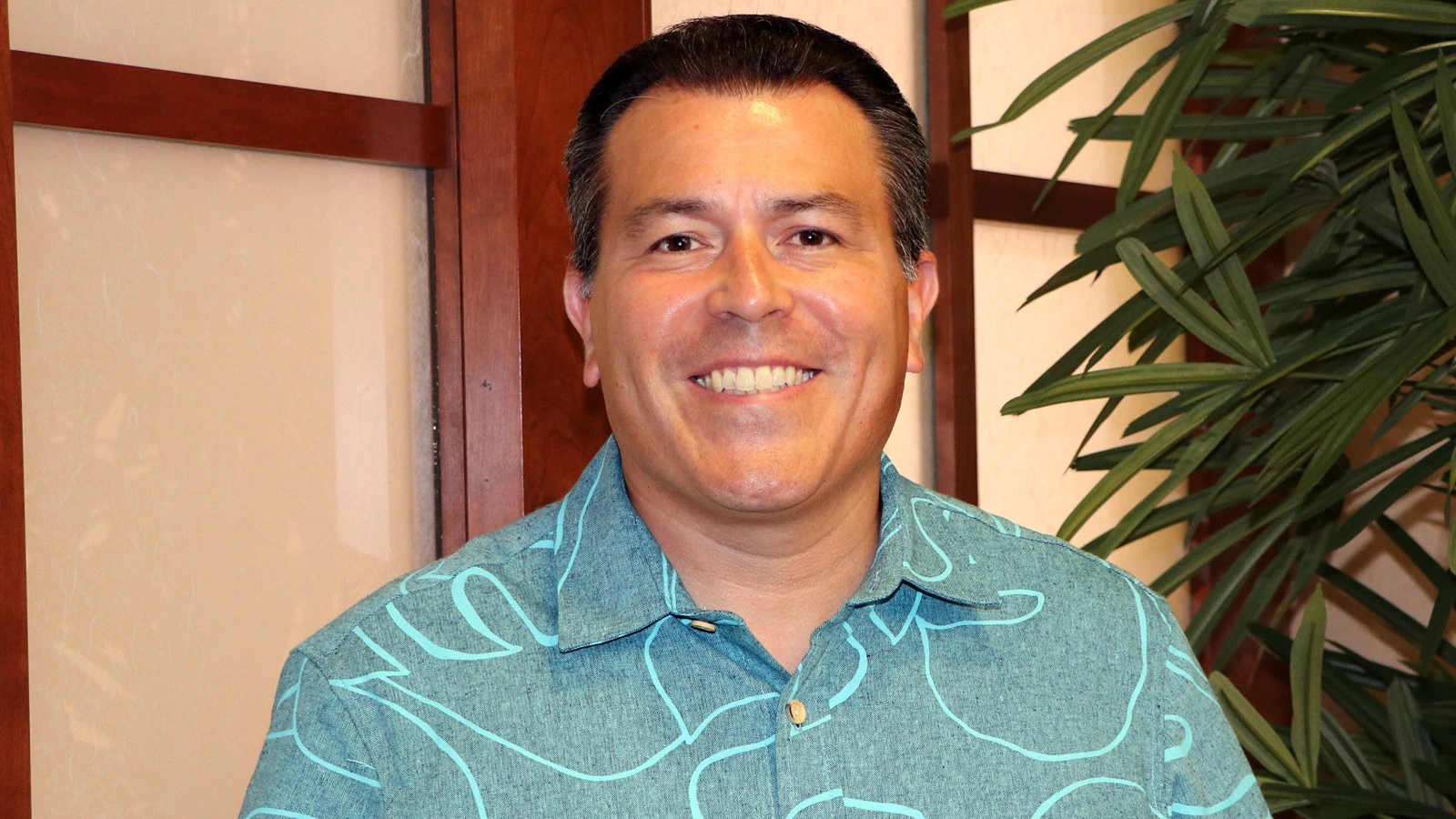Honolulu is home for Katie Kaahanui, who is a new mom pursuing her second master’s in mental health counseling on top of serving as the executive coordinator for the Waikīkī Business Improvement District’s Safe and Sound program.
She joined the organization led by Trevor Abarzua in August 2023, shortly after the initiative launched in September 2022, thanks to a grant from the Kosasa Foundation and the City and County of Honolulu.
In collaboration with the Mayor’s Office, Honolulu Police Department, the Prosecuting Attorney’s Office and other community partners, Safe and Sound addresses public safety and mental health by connecting individuals with the “resources and the treatment that they need as quickly as possible,” said Kaahanui, who also holds a master’s degree in criminal justice.
She described her role as “assisting people caught in a cycle of crime, homelessness, and/or serious mental illness in getting connected to the sustainable, long-term help they need. It is a perfect combination of my passions and a sturdy foundation for me to only build from into the future.” Her other responsibilities include fine-tuning processes and best practices, interpreting data, identifying gaps and finding solutions as “the bridge” between stakeholders.

The overall goal is two-fold: to create a safe environment for residents and visitors alike and to care for those transitioning from the street into improved living situations.
“It’s the same work, now on a bigger scale. … I’m very proud of how much this program has grown, especially in the ‘Sound’ area. People are really showing a desire to help themselves,” Kaahanui said. "A lot of times, at first, people will refuse service, and I don’t see that as a deterrent. You just have to keep showing up, and over time, they usually open up."
She added that the program’s work has impacted “our relationship with business owners, residents, hotels, who all reach out, and I think that needs to be the norm for every community.”
“It’s going to take all of us to solve such tough social issues but that’s the magic of everybody rolling up their sleeves together. It’s about finding the right people who can be those ‘Community Champions’.”
Existing partnerships with the Institute for Human Services, Waikīkī Health, the Hawai’i State Judiciary and more have been critical to Safe and Sound’s success.
Kaahanui said something she’s currently working to develop is a warm handoff model. “It’s so nobody is left with their next step unknown – so that there’s a person, a resource, an organization, ready to receive them and go above and beyond for them. … We don’t want people leaving [the Islands] and to just hope for the best.”
One recent example, she said, was when a local judge called her about a young female in the Waikīkī district who wasn’t from here and was getting into trouble on the streets. “I did an intake interview to learn more about her and she gave me the number to her mom who was [on the Mainland].
“When I contacted her, she started bawling and was so relieved that her daughter was found. I told her we’d send her back home after dealing with her court responsibilities first and later worked with the mom to make sure she’d be at the airport when she landed, and could take her to rehabilitation and be a support to her from there.
“That’s a really good example of that warm handoff and for me, it’s really energizing to help coordinate and problem-solve in such a meaningful way.”
The Safe and Sound program has potential to grow into something that serves not just Waikīkī, but beyond, according to Kaahanui.
“It excites me, and I think that it’s doable. But right now, we’re just not at that point yet; however, if there are communities that are interested in learning more about this … we are more than open to meeting with them."
For more information, visit waikikibid.org/safe-sound-waikiki.
Closer look
Total homeless count in the Waikīkī geographic area over time:
June 2025 count: 159
October 2024 count: 183
September 2022 count: 251
What does that mean? “This represents a 37% decrease in homelessness in Waikīkī since Safe and Sound Waikīkī started in 2022, and a 13% decrease since October 2024,” Kaahanui said. The last count was conducted on June 3.
Source: Waikīkī Business Improvement District, Honolulu Police Department and the University of Hawaiʻi at Mānoa's College of Urban & Regional Planning
Kelsey Kukaua Medeiros can be reached at kelsey@alohastatedaily.com.





